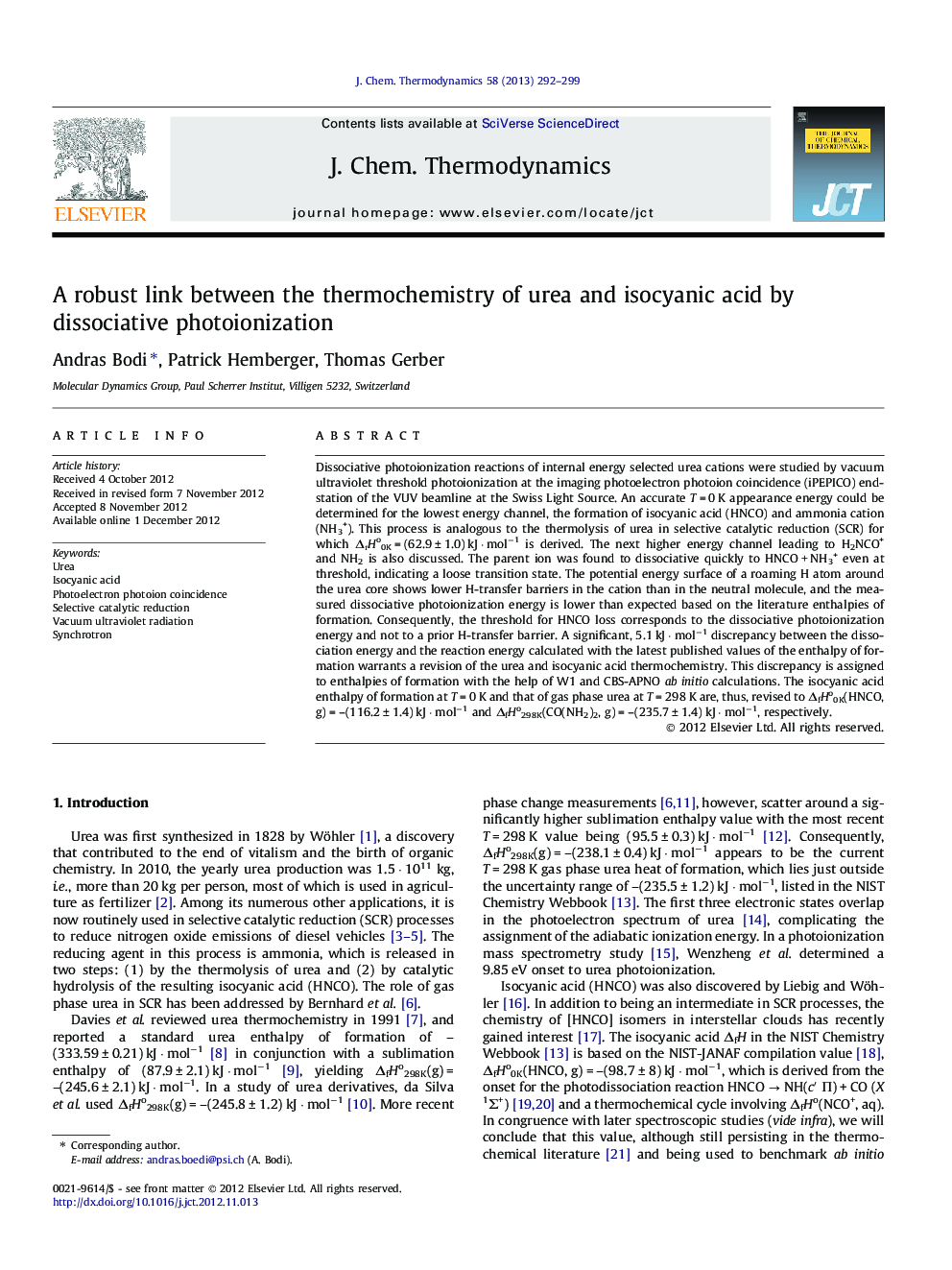| کد مقاله | کد نشریه | سال انتشار | مقاله انگلیسی | نسخه تمام متن |
|---|---|---|---|---|
| 215828 | 1426255 | 2013 | 8 صفحه PDF | دانلود رایگان |

Dissociative photoionization reactions of internal energy selected urea cations were studied by vacuum ultraviolet threshold photoionization at the imaging photoelectron photoion coincidence (iPEPICO) endstation of the VUV beamline at the Swiss Light Source. An accurate T = 0 K appearance energy could be determined for the lowest energy channel, the formation of isocyanic acid (HNCO) and ammonia cation (NH3+). This process is analogous to the thermolysis of urea in selective catalytic reduction (SCR) for which ΔrHo0K = (62.9 ± 1.0) kJ · mol−1 is derived. The next higher energy channel leading to H2NCO+ and NH2 is also discussed. The parent ion was found to dissociative quickly to HNCO + NH3+ even at threshold, indicating a loose transition state. The potential energy surface of a roaming H atom around the urea core shows lower H-transfer barriers in the cation than in the neutral molecule, and the measured dissociative photoionization energy is lower than expected based on the literature enthalpies of formation. Consequently, the threshold for HNCO loss corresponds to the dissociative photoionization energy and not to a prior H-transfer barrier. A significant, 5.1 kJ · mol−1 discrepancy between the dissociation energy and the reaction energy calculated with the latest published values of the enthalpy of formation warrants a revision of the urea and isocyanic acid thermochemistry. This discrepancy is assigned to enthalpies of formation with the help of W1 and CBS-APNO ab initio calculations. The isocyanic acid enthalpy of formation at T = 0 K and that of gas phase urea at T = 298 K are, thus, revised to ΔfHo0K(HNCO, g) = –(116.2 ± 1.4) kJ · mol−1 and ΔfHo298K(CO(NH2)2, g) = –(235.7 ± 1.4) kJ · mol−1, respectively.
Figure optionsDownload as PowerPoint slideHighlights
► Dissociative photoionization in urea and urea pyrolysis are analogous processes.
► The reaction energy from urea to ammonia and isocyanic acid is measured.
► Potential energy hypersurfaces show why dissociative photoionization proceeds without a reverse barrier.
► Reaction energy and ab initio results lead to updated urea and isocyanic acid enthalpies of formation.
Journal: The Journal of Chemical Thermodynamics - Volume 58, March 2013, Pages 292–299